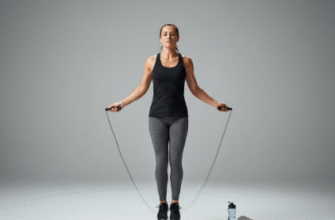Feeling stiff? Like your body just doesn’t move the way it used to, or the way you want it to? Maybe you stretch regularly, hitting those yoga classes or doing your post-workout routine, but you still feel restricted, or perhaps you keep hitting the same frustrating plateaus in your training. It’s a common story. We often think flexibility is the key, the ability to passively reach a certain position. But what if the real game-changer isn’t just flexibility, but usable mobility – the ability to actively control your body through its entire range of motion?
This is where a system like Functional Range Conditioning, often abbreviated as FRC, comes into the picture. It’s less about passively folding yourself into pretzels and more about building strong, resilient joints that you can actively command. Think of it as strength training, but specifically for your joints and their available workspace.
So, What Exactly is Functional Range Conditioning?
Developed by Dr. Andreo Spina, FRC is a comprehensive joint training system based on scientific principles and research. Its primary goal is to improve mobility, strengthen joints, and enhance overall body control. Unlike some approaches that focus purely on increasing passive flexibility (how far a joint *can* be moved, perhaps with external help), FRC prioritizes expanding your active range of motion – the range you can consciously control using your own muscular effort. It views mobility as a fundamental attribute that needs to be trained systematically, just like strength or endurance.
The core idea is that if you can’t actively control a range of motion, you don’t truly ‘own’ it. Relying on passive flexibility without underlying control can leave joints vulnerable. FRC aims to bridge that gap, teaching your nervous system how to control the ranges you already have and then gradually expanding that controllable range.
Key Principles Driving FRC
Understanding a few core concepts helps grasp why FRC is effective:
Articular Independence and Control
This refers to the ability to move one joint without unwanted movement or compensation from neighbouring joints. Can you rotate your shoulder without arching your back or jutting your neck forward? Can you move your hip without your pelvis tilting excessively? FRC heavily emphasizes developing this control. It teaches you to isolate joint movements, which is crucial for both healthy function and targeted training.
Active vs. Passive Range of Motion
Imagine someone pushes your leg high up in a stretch – that’s your passive range. Now, try lifting your leg that high using only your leg muscles – that’s your active range. Often, there’s a significant difference. FRC works specifically to shrink this gap by strengthening the tissues around the joint, particularly at the end ranges of motion. The goal is to make more of your passive range usable and controllable.
Progressive Adaptation
Just like lifting weights, FRC applies the principle of progressive overload to mobility training. You need to introduce specific stimuli (like muscular tension and controlled effort) to encourage your tissues and nervous system to adapt and improve. This isn’t just about gentle stretching; it involves generating force and effort within specific joint positions to elicit change.
Irradiation and Tension
FRC often involves creating tension throughout the body, not just at the joint being worked. This concept, known as irradiation, suggests that creating maximal tension in surrounding muscles can enhance neural drive and stability at the target joint. It helps ensure the movement is controlled and focused, preventing compensations.
Core Techniques You Might Encounter
While FRC includes various techniques, a few are fundamental:
Controlled Articular Rotations (CARs)
CARs are arguably the cornerstone of FRC. These involve actively moving a joint through its greatest possible rotational path in a slow, controlled manner. Think of it as drawing the biggest, smoothest circle possible with that joint. You’re not aiming for speed or momentum; you’re exploring the boundaries of your active range, feeling for any clicks, pops, or areas of restriction. CARs are performed daily for almost every joint (shoulders, hips, spine, wrists, ankles, etc.) and serve multiple purposes:
- Assessment: They tell you how your joints are feeling and moving on any given day.
- Maintenance: They help maintain your current active range by ensuring the joint moves through its full capacity regularly.
- Joint Health: They stimulate joint mechanoreceptors, promote synovial fluid distribution (joint lubrication), and help signal to the brain that this range is important and should be kept.
Imagine slowly rotating your shoulder, keeping your torso still, trying to make the movement as large and smooth as possible, paying close attention to every degree of motion. That’s the essence of a shoulder CAR.
PAILs / RAILs (Progressive/Regressive Angular Isometrics Loading)
This sounds technical, but the concept is about expanding your range of motion using isometric contractions. Here’s a simplified breakdown:
- Passive Stretch: You first move into a passive stretch at the limit of your current range.
- PAILs Contraction: While holding the stretch, you isometrically contract the tissues being stretched. You’re essentially trying to push *out* of the stretch against an immovable object (like the floor, or your own resistance), ramping up the intensity gradually. This strengthens the stretched tissues.
- RAILs Contraction: Immediately after the PAILs, you reverse the effort and isometrically contract the opposing tissues – the ones that would pull you *deeper* into the stretch. This teaches your nervous system to actively pull you into that new range.
This cycle helps convince your nervous system that the end range is safe and strong, gradually allowing you to access and control more motion over time.
End-Range Expansion / Lift-Offs
These techniques focus specifically on building strength right at the very edge of your active range of motion. A ‘lift-off’, for example, might involve getting into a certain position (like a deep hip rotation) and then actively trying to lift your limb slightly off the supporting surface without compensating, using only the muscles around the target joint. This directly strengthens the tissues responsible for controlling that end range.
Why Bother With FRC? The Payoffs
Investing time in FRC principles can yield significant benefits:
- Improved Joint Health: Regular, controlled movement nourishes joint tissues and can contribute to long-term joint health and resilience.
- Increased Usable Mobility: You gain range of motion that you can actually *use* in daily life, sports, or fitness activities, not just passive flexibility.
- Enhanced Body Control and Awareness: FRC cultivates a deeper connection with and understanding of how your body moves.
- Potential Injury Mitigation: By strengthening joints throughout their range and improving control, FRC can help make your body more resilient to unexpected forces or movements. Stronger, more controlled joints are generally safer joints.
- Better Performance: Whether you’re an athlete, a dancer, or just want to move better day-to-day, improved mobility and control can translate to greater efficiency, power, and skill expression.
Listen To Your Body: While FRC involves effort and working at your end ranges, it should not cause sharp or persistent pain. Discomfort during contractions is normal, but differentiate it from signals of injury. Always prioritize quality of movement over quantity or intensity, especially when starting out. If you have pre-existing conditions or concerns, consult with a qualified professional before beginning any new exercise program.
How Is FRC Different from Stretching or Yoga?
While activities like static stretching or yoga can certainly improve flexibility, FRC differs in its primary focus and methodology. Traditional stretching often emphasizes passive range and relaxation. Yoga incorporates active poses but might not systematically target end-range control or articular independence in the same way FRC does. FRC places a strong emphasis on:
- Active Control: Training the nervous system to actively manage the range of motion.
- Isometric Strength: Using specific isometric contractions to expand range and build tissue capacity at the end ranges.
- Joint Specificity: Focusing intently on isolating individual joint function.
- Systematic Progression: Applying principles of progressive overload to mobility training.
They aren’t mutually exclusive; FRC can complement other practices by building a stronger, more controlled foundation for movement.
Getting Started with FRC Principles
If you’re interested in exploring FRC, the best starting point is usually with Controlled Articular Rotations (CARs). Dedicate a few minutes each day to performing CARs for your major joints: neck, spine, shoulders, elbows, wrists, hips, knees, ankles. Focus intently on the quality of movement – slow, controlled, and exploring the maximum pain-free range.
Be patient. Improving mobility and joint function is a long game, much like building strength. Consistency is far more important than intensity, especially initially. Pay attention to the feedback your body provides through CARs. Over time, you’ll develop better awareness and control.
For more advanced techniques like PAILs/RAILs or specific end-range training, seeking guidance from a certified FRC Mobility Specialist (FRCms) is highly recommended. They can assess your individual needs, teach the techniques correctly, and help you apply them safely and effectively.
Invest in Your Movement Future
Functional Range Conditioning offers a powerful framework for taking ownership of your joint health and movement capacity. It moves beyond simply stretching and focuses on building strong, controlled, and resilient joints. By incorporating principles like CARs and understanding the importance of active range of motion, you can invest in your body’s ability to move well not just today, but for years to come. It’s about building a body that’s not just flexible, but functionally mobile and capable.








